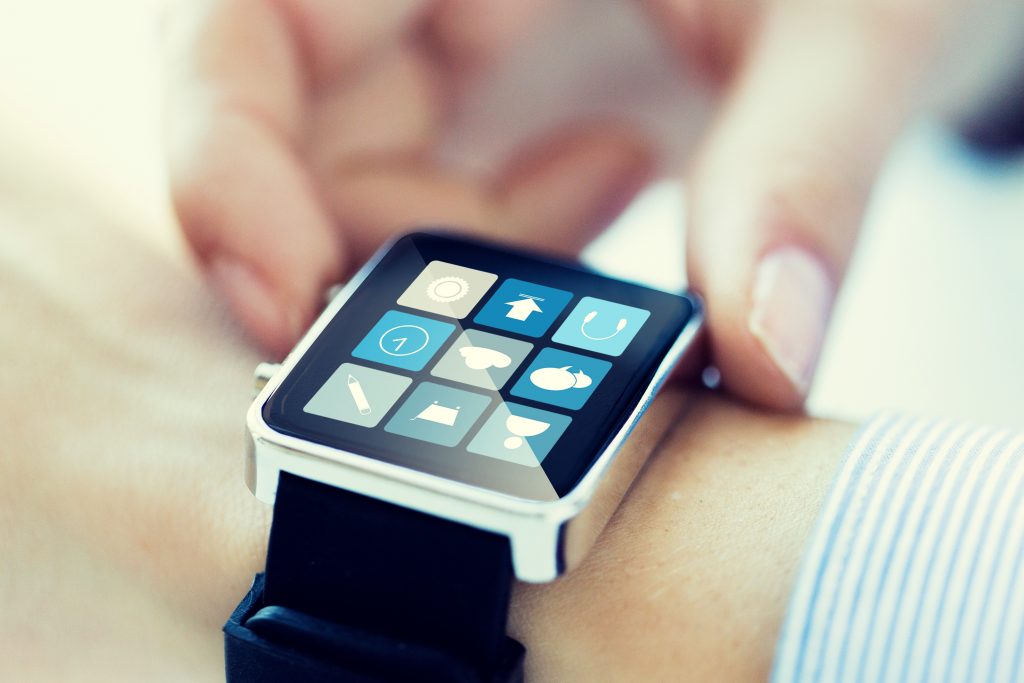Virtual trials, sometimes also referred to as “remote” or “site-less” trials are an innovative and emerging trial design. These trials aim to reduce the patient burden associated with traditional clinical trials. The underlying idea is that, by taking away the need for study subjects to visit a central hospital or laboratory for treatment or tests, the patient satisfaction will improve and the otherwise high loss-to-follow-up rate will substantially decline. This also allows patients from rural areas to more easily participate in clinical trials and—of course—results in time and cost savings for the study sponsor.
Trials can be either completely or partially virtual (“hybrid trials”). In this article, I explore the various types of virtual trials and the many different elements of traditional clinical trials that can “virtualized,” as well as the potential benefits on patient engagement and trial outcomes.
Virtual Trial Recruitment
In completely virtual trials, electronic technologies facilitate each step of the study, from subject recruitment and assessment for eligibility, all the way to data collection and analysis. In terms of patient recruitment, social media and search engine tools such as Google AdWords are effective for speeding up the recruitment process. Once recruited, patients can be assessed for eligibility over video call or online surveys, and virtual patient portals can be set up with all relevant information on the trial. This consequently allows the patient to go over the trial explanations on their own time, avoiding the informational overwhelm of having an investigator or physician doing this as a one-off event in person. As a result, the patient will be able to better understand the trial process and purpose, minimizing early drop-out.
Patient Apps and Wearables
 Wearables and smartphone apps are important components of many virtual and hybrid trials.
Wearables and smartphone apps are important components of many virtual and hybrid trials.
These technologies have the potential to completely change the way we collect and analyze clinical trial data. Wearables include consumer devices, such as smartphones and the FitBit or Apple Watch, as well as medical devices such as continuous glucose monitors. In theory, there are many benefits of collecting trial data from apps and wearable technologies, which are largely unnoticeable to the patients. For example, these include improved patient recruitment; increased trial efficacy; reduced costs; improved and more convenient monitoring of the patients, endpoints, and adverse events; the ability to collect more accurate and real-time data; and, ultimately, an improved understanding of the disease or treatment under investigation.
Currently, several trials on various conditions are using wearable technologies, with research on insomnia and depression leading the way, followed by other neurological conditions. In most studies to date, wearable technologies were used to monitor sleep quality and/or physical activity, with other measurements including ongoing heart rate and blood pressure monitoring, drug adherence and delivery, seizure frequency, and body stability or movements.
(Virtual) Home Visits
 The ability to collect data without the trial participants having to visit a hospital or laboratory for evaluation and sample collection is another key benefit of virtual trials. This can be achieved through collection and transmission of data from smartphones or wearables. However, it may also entail virtual “house calls” by a healthcare professional or study investigator. If there is a study drug, this can either be shipped directly to the participants’ houses or picked up at a local pharmacy or depot.
The ability to collect data without the trial participants having to visit a hospital or laboratory for evaluation and sample collection is another key benefit of virtual trials. This can be achieved through collection and transmission of data from smartphones or wearables. However, it may also entail virtual “house calls” by a healthcare professional or study investigator. If there is a study drug, this can either be shipped directly to the participants’ houses or picked up at a local pharmacy or depot.
Throughout the trial period, pre-scheduled video appointments over smartphones or laptops, preceded by text message or email reminders, can be conducted to assess each participant’s progress, ensure compliance, and address any potential issues. If needed, the patient or investigator can also easily initiate a virtual appointment on short notice if there are more pressing concerns that need to be discussed. By performing these real-time virtual check-ins, the number of trial sites needed and the associated costs can be substantially reduced, without completely losing out on personal interactions.
Alternatively, a local nurse or physician may come to the patient’s house to do a physical assessment or collect samples. Either way, the result is higher convenience for the patient, especially if living in a remote community or if unable to travel to a central study site.
Benefits of Remote Trials for Patients and Investigators
As alluded to above, the theoretical benefits of virtual or hybrid trials for both patients and investigators are manifold. For example, these include:
- Substantial cost savings by avoiding expensive lab tests, minimizing the number of study team members and the need for them to travel, and improving the overall efficacy of the trial
- Quicker and more efficient recruitment and eligibility screening
- Reduced drop-out rates and improved compliance as a result of the high convenience
- The ability of more diverse patients and those living in geographically isolated communities to participate
- That the investigators can see and assess more participants, more quickly and efficiently
- The real-time data collection; this allows the investigators to modify or (if needed) stop the study readily, ensuring patient safety and limiting costs
- A more patient-centric approach, making the patients feel like they are active participants
Barriers to Fully Virtual Trials
However, despite the numerous real and theoretical benefits of virtual trials, hurdles remain before their full potential can be realized. In brief, these include:
- Concerns about patient privacy, data ownership, and cybersecurity breaches
- Inadequate data infrastructure
- Recruitment and inclusion of participants with poor computer literacy (e.g. elderly patients)
- Appropriate study population and device selection
- The inability to confirm whether the data from wearables are actually collected from the study participant
- Regulatory issues and lack of clinical integration and harmonized terminology and guidelines related to electronic informed consent and other aspects of virtual trials
- A need for close cooperation between the biopharmaceutical industry and wearable device manufacturers to develop standardized methodological approaches and a shared understanding of the trial objectives
To overcome these barriers, close collaboration and communication between all stakeholders, including manufacturers, investigators, healthcare professionals, payers, and patients, will be essential.
How Impetus Can Help
When it comes to facilitating virtual trials, Impetus Digital can help in almost every way! The comprehensive and best-in-class Impetus InSite Platform® can be used from start to finish (and beyond!) to enable investigators and patients to co-create study protocols and informational materials, determine the most effective recruitment strategies, continuously communicate with remote team members and participants, and receive feedback from study patients. The platform can also host educational resources that the participants can access on their own time. The possibilities are endless!
What Does the Future Hold?
 With the ongoing and rapid advances in wearable technologies, one can expect that both commercial and medical devices will continue to get more accurate, convenient (we’re talking smart gloves, shoes, earrings, glasses, and—in the more distant future—contact lenses!), and able to provide clinical data on an increasing number of trial outcomes. If wearable technologies and virtual trials prove successful and become more common, the healthcare market likely stands to save millions of dollars.
With the ongoing and rapid advances in wearable technologies, one can expect that both commercial and medical devices will continue to get more accurate, convenient (we’re talking smart gloves, shoes, earrings, glasses, and—in the more distant future—contact lenses!), and able to provide clinical data on an increasing number of trial outcomes. If wearable technologies and virtual trials prove successful and become more common, the healthcare market likely stands to save millions of dollars.
Today, a “fully virtual trial” means that all aspects of the trial itself, from recruitment to data collection, are conducted remotely. However, why stop there? We already have the digital technology to create study protocols with stakeholders in different sites, whether in real-time over video calls or asynchronously using safe and compliant discussion forums or online document annotation. The same also goes for writing manuscripts for journal publication once the trial has concluded. In the future, trials where the investigators have met neither each other nor the patients may very well be standard practice.
At the end of the day, however, the future of virtual trials will depend largely on the patients’ satisfaction with these trials, as well as on study sponsors working to overcome the current barriers.
Like they say: where there’s a will, there’s a way.
References
Horner, L. (2018). Value of Virtual Care Technology in Clinical Trials. Applied Clinical Trials. Retrieved from http://www.appliedclinicaltrialsonline.com/value-virtual-care-technology-clinical-trials
Izmailova, E.S., Wagner, J.A., Perakslis, E.D. (2018). Wearable Devices in Clinical Trials: Hype and Hypothesis. Clin Pharmacol Ther., 104, 42-52.
Jadhav, S. (2016). Virtual Clinical Trials: The Future of Patient Engagement? Applied Clinical Trials. Retrieved from http://www.appliedclinicaltrialsonline.com/virtual-clinical-trials-future-patient-engagement
Lucchini, C. (2018). Industry embraces the virtual trial platforms. Pharma World. Retrieved from https://www.pharmaworldmagazine.com/industry-embraces-the-virtual-trial-platforms/
Mongan, A.M. (2018). Virtual Clinical Trials: Are Site-less Trials the Future? Clinical Trials Arena. Retrieved from https://www.clinicaltrialsarena.com/comment/virtual-clinical-trials-site-less-trials-future/
No author listed. (2018). 5 Benefits of Wearable Technology Usage in Clinical Trials. Arena International. Retrieved from http://www.arena-international.com/octeastcoast2018/5-benefits-of-wearable-technology-usage-in-clinical-trials/7153.article
Rose, J. (2018). Virtual Trials – A more direct path to patients. IQVIA. Retrieved from https://www.iqvia.com/blogs/2018/06/virtual-trials-a-more-direct-path-to-patients
Withington, L. (2018). Clinical Research on the Wearable Technology Bandwagon. Pharma intelligence. Retrieved from https://pharmaintelligence.informa.com/resources/product-content/clinical-research-on-the-wearable-technology-bandwagon

